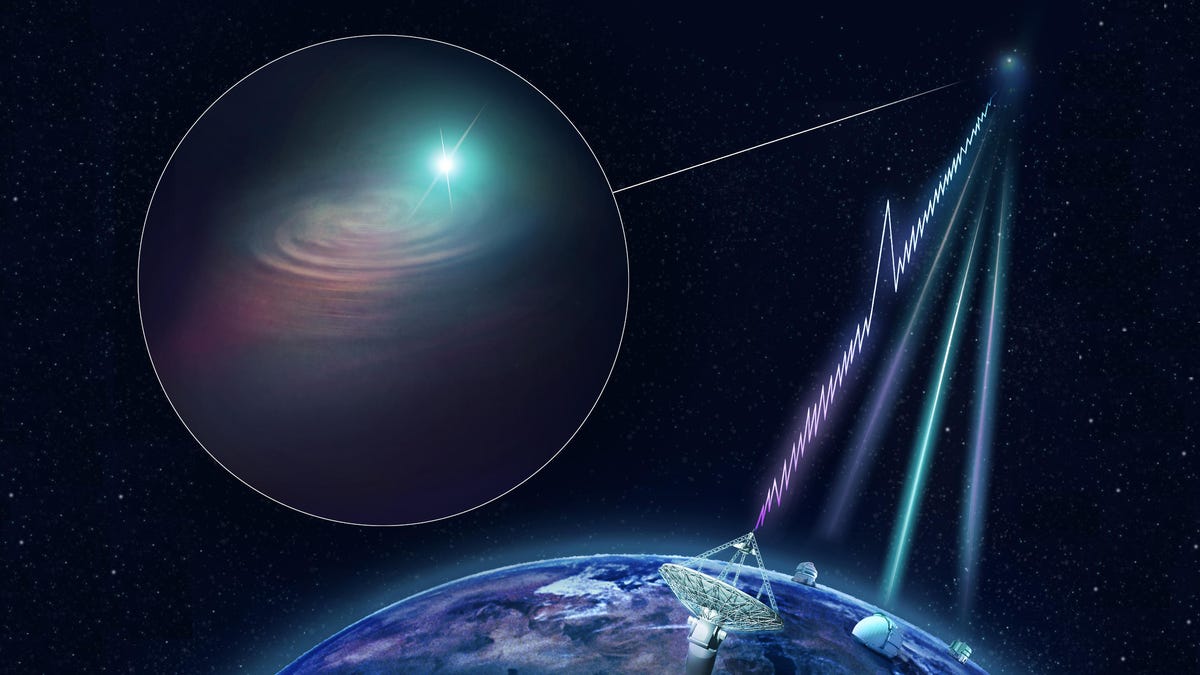Mysterious repeating radio signal traced to unexpected outer space location
Fast radio bursts are one of the newest unexplained phenomena in the universe, and each discovery seems to add another layer to the riddle.

Only a handful of the enigmatic signals have ever repeated themselves.
The source of strange signals called fast radio bursts from across the cosmos is one of the most perplexing puzzles in astronomy. This week, astronomers identified the source of one such repeating signal for just the second time, and the result seems to have generated more questions than answers.
There have been hundreds of detections of these fast radio bursts, or FRBs, over the past two decades, but only a handful of the enigmatic signals have ever repeated themselves. In 2017, repeating FRB 121102 was traced back to a distant dwarf galaxy, 3 billion light-years beyond the Milky Way. Now an international team has tracked another repeater back to a very different source, the star-forming region of a spiral galaxy similar to our own Milky Way. (To be precise, that's FRB 180916.J0158+65 and spiral galaxy SDSS J015800.28+654253.0.)
"The found location is radically different from the previously located repeating FRB, but also different from all previously studied FRBs," said Kenzie Nimmo, a Ph.D. student at the University of Amsterdam, in a release.
In other words, FRBs -- both repeating and nonrepeating -- seem to originate from radically different locales around the universe. This leaves Nimmo and others wondering if the origin of an FRB isn't the most important clue in solving the puzzle.
"It may be that FRBs are produced in a large zoo of locations across the universe and just require some specific conditions to be visible," she said.
A study, co-authored by Nimmo and led by Benito Marcote at Europe's Joint Institute for VLBI ERIC, outlines the process of localizing a repeating FRB for just the second time. It was published in Thursday's issue of Nature.
While the new study may cast doubt on what we thought we knew about FRBs, the good news is that the newly mapped repeater is relatively close at "only" half a billion light-years from Earth, providing a prime opportunity for studying FRBs more closely.
Originally published Jan. 9, 11:14 a.m. PT

